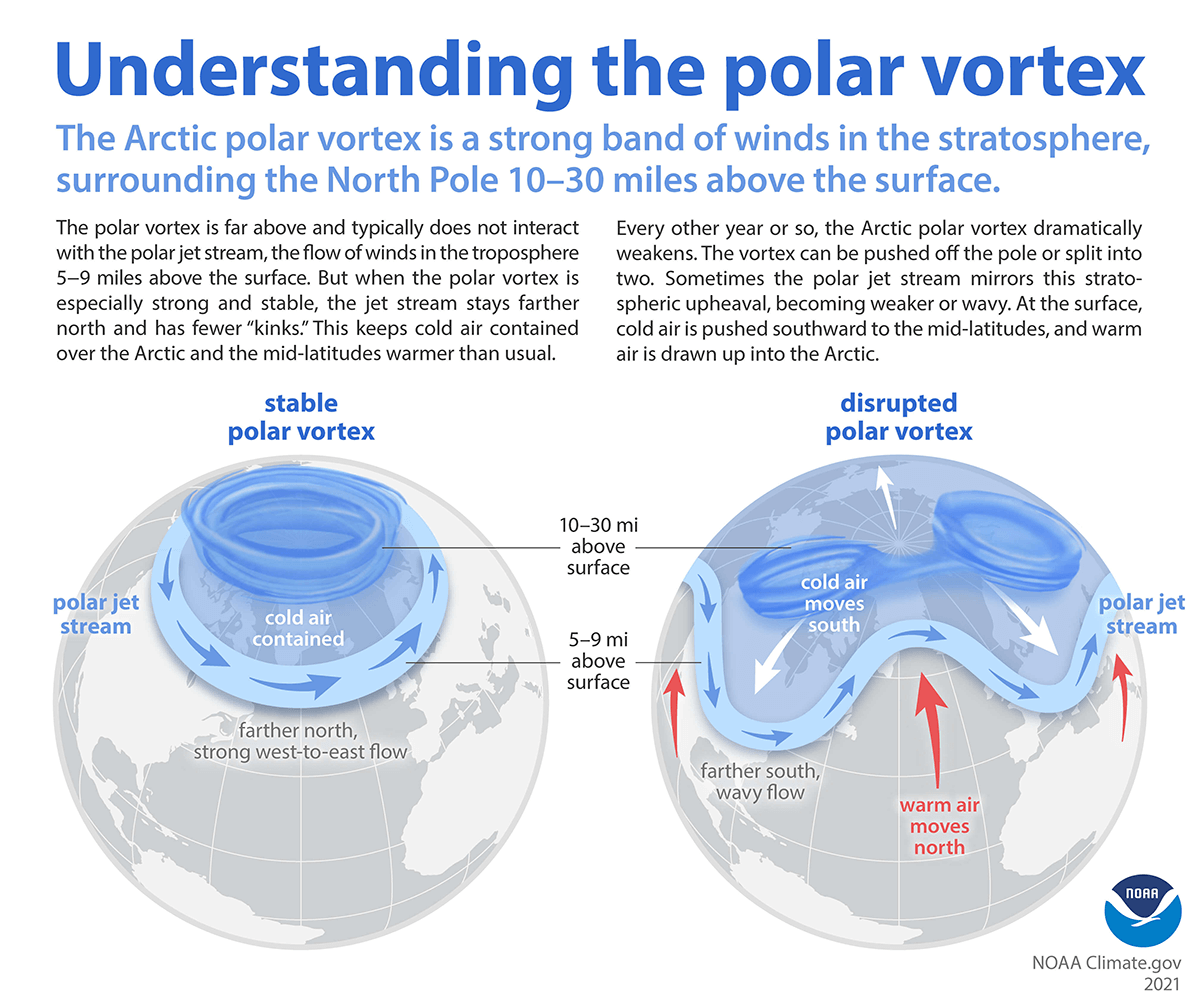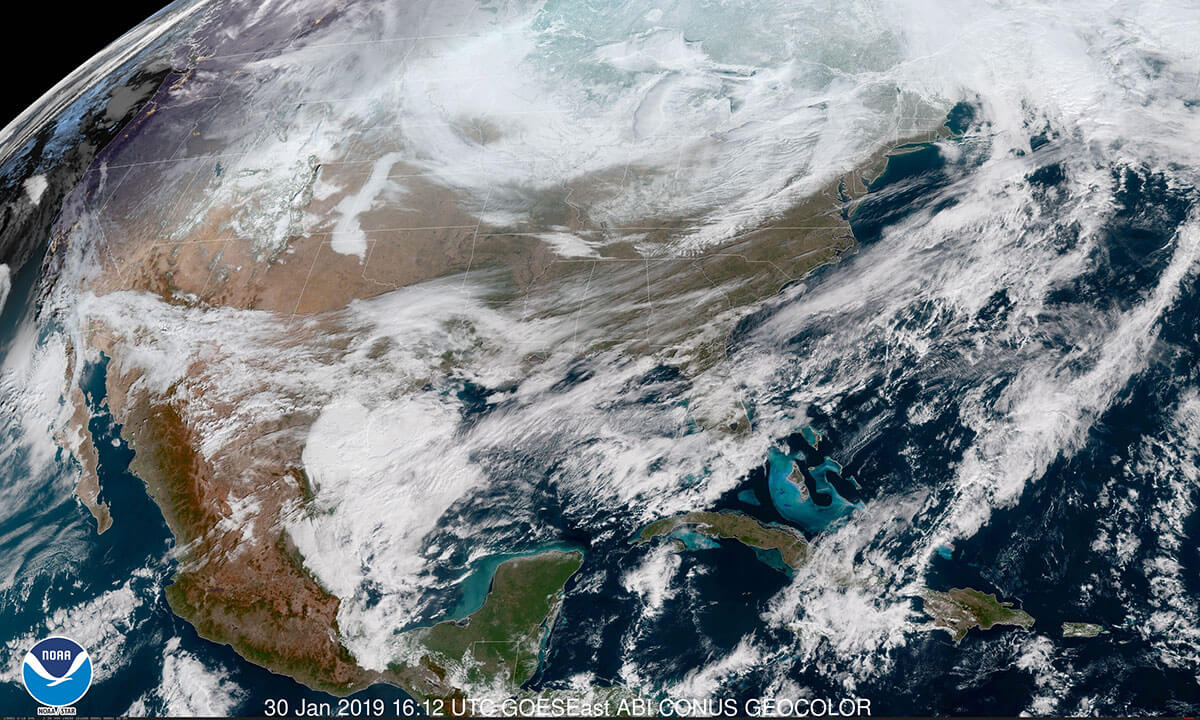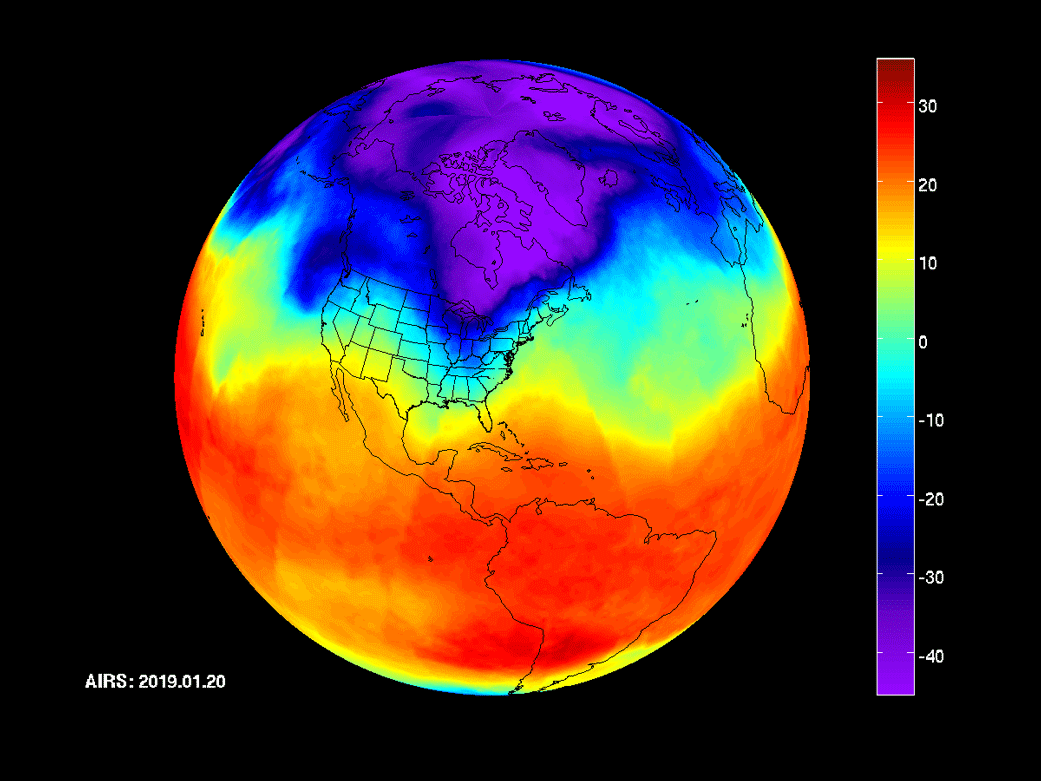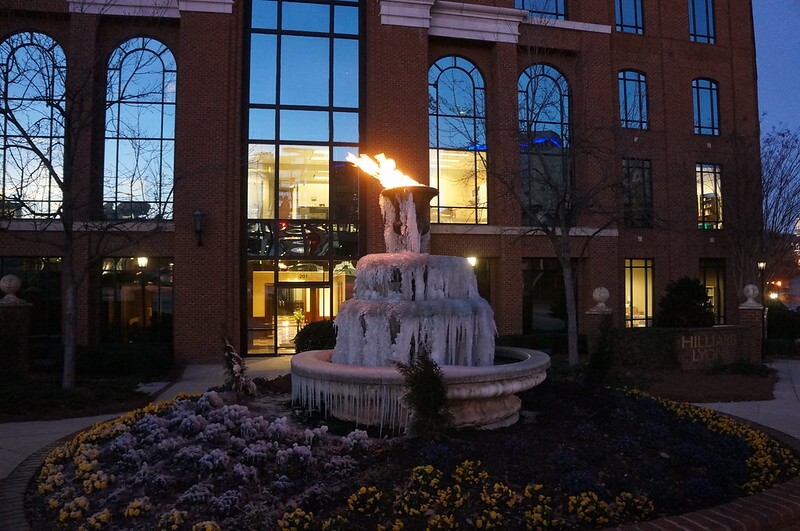If you’ve heard of the polar vortex, you might know it has something to do with very cold weather. But what exactly is the polar vortex? And what causes it?

Credit: NOAA
The polar vortex is an area of low pressure—a wide expanse of swirling cold air—that is parked in polar regions. During winter, the polar vortex at the North Pole expands, sending cold air southward. This happens fairly often and can be associated with outbreaks of cold temperatures in the United States.
How can the polar vortex cause extremely cold temperatures in the US?
Sometimes this low-pressure system, full of arctic air, can weaken and travel from its usual position. As this system weakens, some of the cold, arctic air can break off and migrate south, bringing plenty of cold air with it. Areas as far south as Florida may experience arctic weather as a result.

NOAA's GOES-East captured this image of arctic winds blowing clouds over the United States during a polar vortex on January 30, 2019. Credit: NOAA
When the low-pressure system is strong and healthy, it keeps the jet stream traveling around Earth in a circular path. The jet stream is a band of reliably strong wind that plays a key role in keeping colder air north and warmer air south. But when the vortex weakens, part of the weakened low-pressure system can break off. This breaking-off process is what can cause colder temperatures in the US.
Without that strong low-pressure system, the jet stream does not have enough force to maintain its usual path. It becomes wavy and rambling. When high-pressure systems get in its way, a collection of cold air pushes south, along with the rest of the polar vortex system.

This animation shows the cold air of a polar vortex blowing south from central Canada into the U.S. Midwest in January 2019. Credit: NASA/JPL-Caltech AIRS Project
Is all cold weather due to a polar vortex?
Cold temperatures due to the polar vortex are not rare in the United States. But, it is important to remember that not all cold weather comes from the polar vortex. Although cold air from the polar vortex can be pushed south, it typically remains parked in polar regions. It takes pretty unusual conditions for the vortex to weaken or migrate far south. Other weather conditions can cause cold arctic weather to travel south, too.

Cold air from a polar vortex caused this fountain in Greenville, South Carolina, to freeze in 2014. Credit: Public Domain
Can we predict cold weather from the polar vortex?
NOAA weather satellites, like the GOES-R series satellites, help us to predict weather. By keeping a watchful eye on Earth’s weather and potential storm formations, these satellites can provide up-to-the-minute information about Earth’s weather. This helps scientists make predictions about severe weather, like cold weather from the polar vortex.




